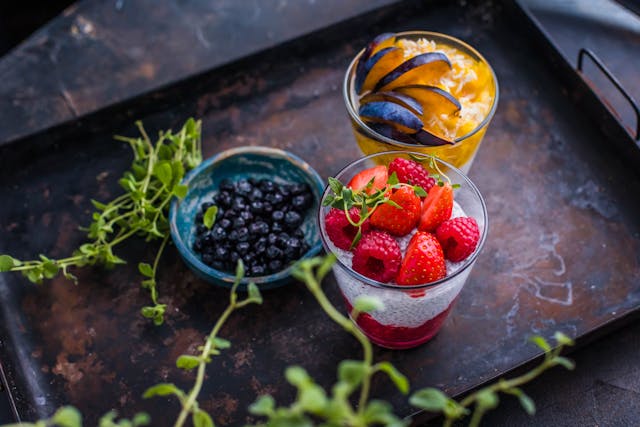- Revitalize. Renew. Rejoice
- younger
Is Your Gut Secretly Fueling Belly Fat? What Women Over 40 Should Know
For many women, turning 40 marks the start of an unexpected change: a growing waistline, even without major lifestyle shifts. But what if the real reason isn’t just hormones or calories—what if it starts in your gut? Here’s the hidden weight gain nobody warns you about.

Research now reveals your gut microbiome—home to trillions of bacteria—may be influencing how you store fat, manage hormones, and even how your body ages. And as you grow older, your gut changes too—often in ways that fuel weight gain, especially around your midsection.
The Hidden Weight Gain Nobody Warns You About
The Belly Fat–Aging–Gut Connection
After 40, several things happen simultaneously:
- Estrogen levels decline, triggering fat storage around the abdomen.
- Muscle mass decreases, leading to a slower metabolism.
- The gut microbiome loses diversity, which increases inflammation and fat accumulation.
These changes promote visceral fat—the harmful belly fat that wraps around your organs. More than a cosmetic concern, visceral fat has been linked to heart disease, type 2 diabetes, Alzheimer’s, and certain cancers (https://www.fightaging.org).
“Visceral fat is metabolically active and inflammatory—it’s not just about how you look, it’s about how you age.”
How Your Gut Bacteria Influence Belly Fat
• An Imbalanced Microbiome Promotes Fat Storage
As women age, they often lose beneficial bacteria and gain inflammatory strains. Research shows that people with obesity have a higher ratio of Firmicutes to Bacteroidetes, which enhances calorie extraction and fat storage from food (Barzilai et al., 2009).
• Inflammation Starts in the Gut
A compromised gut lining leads to “leaky gut“, allowing inflammatory substances to enter your bloodstream. This process, known as metabolic endotoxemia, triggers fat storage—especially around the abdomen. The research, published in the journal Cell Metabolism, was led by Dr. Camell — who is an assistant professor in the College of Biological Sciences and Medical School at Yale University’s School of Medicine.
• Your Microbes Influence Hunger
Healthy bacteria produce short-chain fatty acids (SCFAs) that regulate appetite, blood sugar, and inflammation. But microbial diversity—and SCFA production—declines with age (Vinolo et al., 2020), making weight gain more likely.
How to Combat Belly Fat and Inflammation After 40
1. Reduce Sugar and Refined Carbs
Refined carbs feed the wrong microbes and raise insulin—fueling fat gain. Choose whole carbs like quinoa, legumes, and sweet potatoes to stabilize blood sugar and support gut health. You might want to know the shocking truth about “Sugar Face“.
2. Nourish Your Gut with Prebiotic Fiber
Fiber feeds your beneficial gut bacteria and helps reduce visceral fat. Foods like garlic, onions, oats, and flaxseeds are excellent sources. Higher fiber intake is consistently linked to smaller waistlines and lower inflammation.
3. Support with Probiotics
Specific probiotic strains, such as Lactobacillus acidophilus or Bifidobacterium genus, may help reduce belly fat and bloating. The Corpas® PRO-JOY is formulated to improve metabolism changes with aging by reversing deterioration and maintaining a balanced gut microenvironment. Talk to a healthcare provider about choosing the right formula.
4. Eat Fermented Foods Regularly
Yogurt, kefir, kimchi, and sauerkraut introduce good bacteria into your gut.
5. Prioritize Sleep
Lack of sleep increases cortisol and impairs gut function, both of which are tied to belly fat. Aim for 7–9 hours per night to support hormonal balance and microbial diversity. (You will be surprised when you read more).
6. Manage Stress Mindfully
Chronic stress disrupts the gut-brain axis and worsens dysbiosis. Deep breathing, mindfulness, and gentle movement can reduce cortisol and help your gut—and waistline—rebound. Exploring wellness retreats in other cities can offer a calm escape from the routine.
7. Move with Purpose
Strength training maintains metabolism-boosting muscle mass, which declines with age. Pair it with daily walks or low-impact cardio for improved gut health and fat loss.
Final Thoughts: It’s Not Just Your Belly—It’s Your Biology
Stubborn belly fat after 40 isn’t just about eating less or moving more. It’s the result of complex biological shifts—many of which start in your gut. The good news? Gut health is something you can take charge of.
By restoring balance to your microbiome, you’re not just slimming your waist—you’re supporting your brain, heart, and overall longevity.






